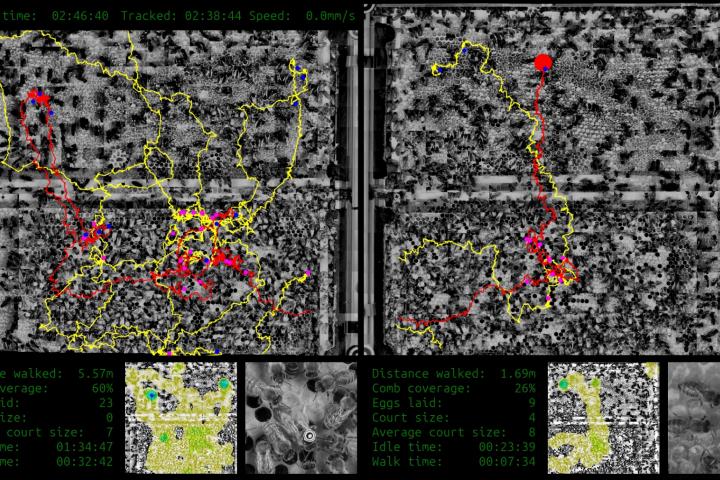Scientists at the Artificial Intelligence Centre of the Czech Technical University in Prague and researchers from Austria, the UK, and Turkey have developed a game-changing technology for a novel type of digitized behavioral research. Their autonomous robots, operating in a honeybee research facility located on the campus of the University of Graz, generate 1400 gigabytes of data streams every day. These data contain high-resolution real-time images of the queen bee and her interactions with worker bees. These data are automatically analyzed by the robotic system, which measures a range of characteristics of the queen and colony behavior.
In the current article "Autonomous tracking of honeybee behaviors over long-term periods with cooperating robots," published in the renowned journal "Science Robotics," Jiří Ulrich and his co-authors present the multitude of relevant data that the robotic system collects: In addition to the queen's movement patterns, it can count the number of laid eggs and overall population of the colony. Moreover, it provides images that can be used to continuously monitor the brood, pollen & honey on the combs.
For the first time, the new robotic system achieved highly accurate and continuous long-term collection of a wide range of relevant data in the beehive simultaneously. The researchers demonstrate the versatility of the research facility by exemplifying 23 so-called "Key Behavioral Metrics," or essential quantifiable behavioral patterns, most of which are automatically extracted by the system in real-time. The authors emphasize that more analyses will be added throughout the "RoboRoyale" project.
The article reports on some astounding initial findings. The researchers found out that the queen bee observed in this study covers a distance of about 1.5 kilometers in a month (on two honeycombs approx. 42x33cm in size), that she prefers to rest at specific areas for up to 1.5 hours, and even in the waning bee season of October, lays an average of 187 eggs per day.
The robotic system was built around a fully functioning bee colony, allowing the bees to carry out their regular foraging flights to the surrounding plants. The robotic system includes two mobile camera heads that share the work autonomously. When the queen walks, the robots move in concert to cooperate on her handover when she walks to the other side of the comb. When the system predicts that queen is going to rest long enough, the camera not monitoring the queen will perform a sweep of the comb to count the worker bees and take images of the brood, pollen, and honey cells.
The recordings use infrared light to avoid influencing the bees' behavior. The HD-quality recordings are subsequently analyzed using advanced computer vision methods. The study comprised more than 100 million individual images, a practically unmanageable volume for human scientists to analyze manually.
With this new system, the international team led by Dr. Krajník from the Czech Technical University showed that intelligent robots are a game changer in behavioral research and ecology as they enable unprecedented insights and knowledge into these complex systems.
Article: Ulrich et al. (2024) “Autonomous tracking of honeybee behaviors over long-term periods with cooperating robots”, Science Robotics.
The project team & projekt info: H2020 FET-OPEN project “RoboRoyale” (Runtime: Nov. 2021 - Okt. 2026)
Project partners:
● Prof. Farshad Arvin, University of Durham, Durham, UK
● Prof. Thomas Schmickl, Universität Graz, Austria,
● Dr. Tomáš Krajník, Czech Technical University, Prague, Czech Republic
● Prof. Erol Sahin, Middle-East Technical University, Ankara, Turkey
Homepage: https://roboroyale.eu

